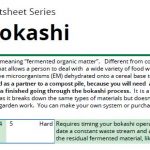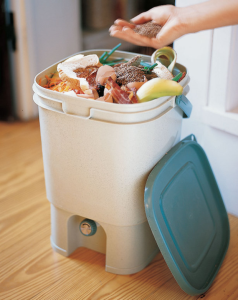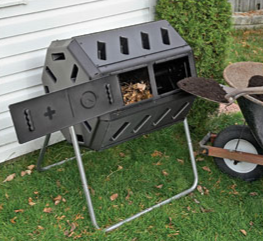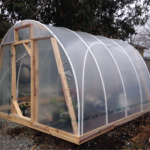Brand new factsheets!
March 16, 2016

We are excited to share two new factsheets with you! We have been getting lots of inquiries about tumbler composters and bokashi and we decided to put together a factsheet for each one to help answer your questions and spark your interest. If the descriptions below spark your interest, check out the new additions on our factsheets page.

Bokashi is a Japanese term meaning “fermented organic matter”. Different from composting, which is aerobic, it is an anaerobic process that allows a person to deal with a wide variety of food waste on-site. Bokashi harnesses the power of effective microorganisms (EM) dehydrated onto a cereal base to carry out the fermentation process . It is best used as a partner to a compost pile, because you will need a place to compost the ‘spent’ material once it has finished going through the bokashi process. It is a great alternative to the green cone food digester as it breaks down the same types of materials but doesn’t need sunlight or to be buried down 2 feet in your garden work. You can make your own system or purchase a ready-to-use unit.

In general, tumbler composters are in the form of a barrel mounted on a stand so the unit can be turned or “tumbled” around a central axis. They can be mounted horizontally or vertically, both work well. Turning these units easily incorporates air into the material inside the tumbler, which can speed up the decomposition process. It is possible that you may get a finished product faster than with passive backyard composting due to the increased aeration that tumblers make possible. However, beware of manufacturers that say you will have finished compost in three weeks or less – anything that looks finished in this short amount of time will be unstable and need to sit for at least 6-8 weeks longer to cure.

When we built our new greenhouse wanted the plans for this project to be free and readily accessible. As such, this factsheet includes a budget and materials list for the greenhouse, a list of the lessons I learned, and some photos of the building process.
Posted in Blog, Composting, Fact Sheet, Featured, Organic Gardening, Waste Diversion


















